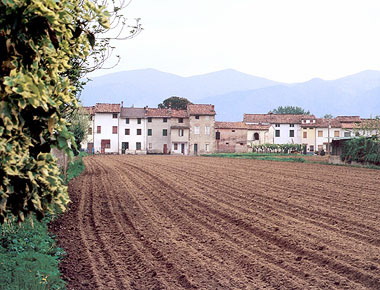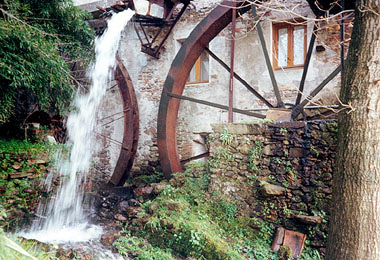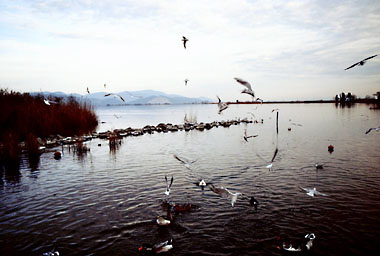Man and his territory between the Apuan Alps, Versilia and the Plain
N° 3 Stops

Information
Recommended season:
beginning of Summer because then you can see the harvesting of the crops and have ideal weather conditions for an ascent in the Apauan Alps.


The environment has been shaped by man to a large extent and the exploitation of woods, pastures and fields is well documented by the many ethnographic museums dedicated to rural life.
Where the mountains didn't offer enough resources for mean survival we can at least reconstruct the emigration process of the local population in search of better fortune.
Recently a crisis of the primary manufacturing activities has led to a new form of administration of the territory focusing on preservation rather than abandon. Regional parks and reserves were created to protect both the mountainous areas of the Apuans and Garfagnana, as well as the lakes and the thick "macchia mediterranea" undergrowth along the coast bordering on the Province of Pisa.
Where the mountains didn't offer enough resources for mean survival we can at least reconstruct the emigration process of the local population in search of better fortune.
Recently a crisis of the primary manufacturing activities has led to a new form of administration of the territory focusing on preservation rather than abandon. Regional parks and reserves were created to protect both the mountainous areas of the Apuans and Garfagnana, as well as the lakes and the thick "macchia mediterranea" undergrowth along the coast bordering on the Province of Pisa.
- CAVALLI S., LAMBERTINI M., Il parco naturale: Migliarino, San Rossore, Massaciuccoli, Pisa, Pacini, 1990
- PIZZIOLO G., DECANDIA L., MICARELLI R., I paesaggi delle Alpi Apuane, Firenze, Multigraphic, 1994
In the north-east of the Province we find the Apuan Alps Park with paths marked by the Club Alpino Italiano. Its proximity to the Tyrrhenian coast, parallel to the mountain ridge and about 15 km away as the crow flies, creates a great variety of environments according to geology, altitude and exposition, the latter being important as it influences the resistance or not of coats of snow. The Apuans are famous first of all for their marble, which was quarried in antiquity for statuary use and today is exported in the whole world. Karst phenomena have given rise to some spectacular "monuments", such as the Antro del Corchia, a cave that has been equipped and lighted for guided tours along several itineraries.
Such a rough environment required a great effort for the local populations to obtain a revenue from their traditional productions, an effort that is well documented in the "Museo del Lavoro e delle Tradizioni Popolari della Versilia Storica" of Seravezza.
Such a rough environment required a great effort for the local populations to obtain a revenue from their traditional productions, an effort that is well documented in the "Museo del Lavoro e delle Tradizioni Popolari della Versilia Storica" of Seravezza.
In the southernmost part of the Versilia coast we find the Migliarino-San Rossore-Massaciuccoli park with its 21000 hectares of land in two Municipalities of the Province, Viareggio and Massarosa, the lake of "Massaciuccoli" and the "Macchia Lucchese". It includes several typical coastal habitats such as the 'macchia mediterranea', the pine groves and so called 'lame' or sheets, flooded areas among the 'tomboli' or long rows of sand dunes, a favourite spot for bird-watching, visited regularly by more than 200 species.
Going further inland from the coastal area towards the plain of Lucca we enter an area that has been cultivated for centuries. At S. Leonardo in Treponzio, a village belonging to the Municipality of Capannori, there is the permanent exhibition of "Attrezzi della Vita Contadina" created as a collection of ancient implements and reconstruction of traditional habitats to raise awareness on the problem of respecting Nature within a harmonic relationship. Typical cultures of the Piana di Lucca (wheat, corn, beans, flax, mulberries, hemp, millet) are documented also in the "Museo contadino della Piana" of Capannori that was once referred to as the largest rural Municipality in Italy.
Scopri altre attrazioni vicino a Man and his territory between the Apuan Alps, Versilia and the Plain
See allYou may also like..
See allFind more
0







 By car
By car








